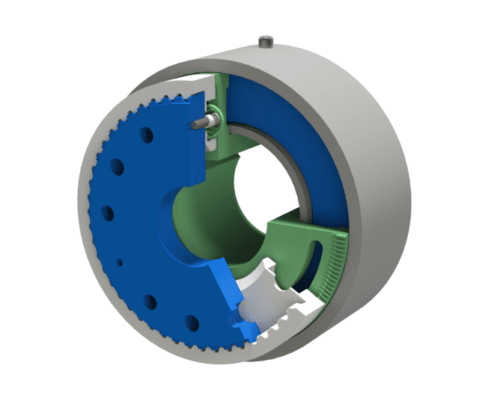 SEPAC is a leading supplier of high reliability electromagnetic clutches, and electromagnetic brakes, used in motion control systems. We create high-quality, engineered-to-order solutions for our OEM clients in a broad range of industries, including:
SEPAC is a leading supplier of high reliability electromagnetic clutches, and electromagnetic brakes, used in motion control systems. We create high-quality, engineered-to-order solutions for our OEM clients in a broad range of industries, including:
- Aerospace
- Defense
- Outer Space
- Robotics
- Oil and Gas
- Energy
- Healthcare (including medical imaging and robotic surgery)
What Is an Electromagnetic Clutch?
Electromagnetic clutches operate electrically and transmit torque mechanically through friction or face teeth. With electromagnetic force generated by energizing a coil, these clutches transfer torque from a prime mover, such as a motor, to a driven element, through a pulley or a coupled shaft to a load. While electromagnetic brakes will effectively stop or maintain rotary movement, an electromagnetic clutch will connect or disconnect two shafts to control the transfer of torque from one shaft to another (parallel shafts or split in-line shafts).
At SEPAC, we specialize in designing, engineering, and manufacturing electromagnetic clutches
Electromagnetic Tooth Clutches
Our Electromagnetic Tooth Clutches are classified into two main categories:
Magnetically Engaged (Power-On) Tooth Clutches
Magnetically Engaged Clutches, also known as power-on tooth clutches, engage and transfer torque when power is applied to the coil. The application of current draws the armature toward the tooth surface and through the locking teeth and the electromagnetic field strength transfers torque to the driven load. When the current is removed, the armature disengages, and the load runs free.
Power on Magnetically Engaged Clutches include:
- SFTC Stationary Field Tooth Clutch
- WMTC Wall Mounted Tooth Clutch
- STCC Stationary Field Tooth Clutch Coupling
Spring Engaged (Power Off) Tooth Clutches
Spring Engaged Clutches, also known as power-off Clutches, engage and transfer torque when power is removed.
The application of electric power allows the armature to move against springs freeing the connected load from the driven load (separates the tooth faces). When the flow of current is turned off, the armature is forced by springs to engage the armature (engaging the tooth faces) coupling it to the output-driven load.
Power Off Spring Engaged Tooth Clutches include:
- SETC Spring Engaged Tooth Clutch
- SECC Spring Engaged Tooth Clutch Coupling
Electromagnetic Friction MD Clutches
Magnetically Engaged (Power-On) Clutches
Magnetically Engaged Power-On Friction Clutches, also known as power-on clutches, engage and transfer torque when power is applied to the coil. The application of current draws the armature and friction discs toward the friction surface and through friction and the electromagnetic field strength transfers torque to the driven load. When the current is removed, the armature disengages and runs free.
Power on Magnetically Engaged Friction Clutches include:
- SFDC Stationary Field Multiple Disc Clutch (dry or in oil)
- ERD Electromagnetic MD Clutch for wet applications (oil)
- SSC Single Surface Friction Clutch (dry)
Working with SEPAC
At SEPAC, we have extensive experience designing, engineering, and manufacturing electromagnetic clutches. We offer a variety of standard products, as well as customization and modification services for customers with highly specific or unique applications.

